- GIỚI THIỆU
- DỊCH VỤ
- Dịch vụ Thương Mại Điện Tử
- Vận chuyển đường biển
- Vận chuyển hàng không
- Vận chuyển hàng lẻ
- Khai thuê hải quan
- Vận tải nội địa
- Dịch vụ quản trị chuỗi cung ứng 4PL
- Vận chuyển dự án công trình
- Vận chuyển đa phương thức
- Dịch vụ kho bãi
- Dịch vụ vận chuyển hàng đi Mỹ
- Chuỗi dịch vụ cung ứng lạnh
- Vận chuyển hàng xuyên biên giới Campuchia, Lào
- TIỆN ÍCH
- YÊU CẦU BÁO GIÁ
- TRA CỨU THÔNG TIN
- CỔ ĐÔNG
- TIN TỨC
- LIÊN HỆ
Logistic News
NEW LOW IN US CONTAINER FREIGHT RATES SET TO EASE INFLATION, REPORTS SHIFL

SHIFEX, the spot container rate index by the digital freight forwarding platform Shifl, has positive news for US consumers as it shows a continued decline in spot rates that is set to marginally shift power away from carriers.
More specifically, according to Shifl’s data, the shipping price for an FEU from China to the US West Coast is set to drop below US$5,000 for the first time since the spike caused by the Covid-19 pandemic.
Shipping a 40' foot container from China to Los Angeles and Long Beach will now cost an average of about US$4,900 in September 2022, down 72% from a high of US$17,500 in September 2021, reports Shifl.
“While spot rates continue to decline, they are still more than three times higher than they were prior to the pandemic. The rates are at levels far lower than at the beginning of 2022, when consumer demand was very high. The pace of this continued decline points to the market returning to some semblance of the new normal,” commented Shabsie Levy, CEO and founder of Shifl.
On the route from China to New York, the year-over-year decline was also significant, but less drastic compared to the West Coast, with FEU rates down 54% to an average of US$8,900 compared with US$19,500 in September 2021.
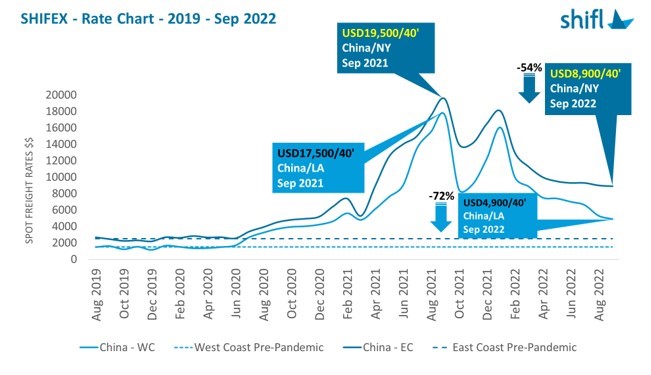
However, it should be noted that box lines have been able to avoid the 23rd straight week of fall in spot rates, lifting their earnings outlook and profit forecasts for 2022 on the back of significant increases in contract rates negotiated in 2021.
"Contract rates are still 60% higher than last year, leaving carriers in the driving seat in the rates tug-of-war well into 2023," pointed out Shifl.
Lines such as Maersk and ONE reported lower volumes in the second quarter as they focused on their multi-year contracts. Representing 70% of container movements, these contracts now drive revenue growth of more than 60% year-on-year.
“As the spot market rates continue to drop, carriers will be forced to renegotiate long-term contract rates that were set at the previous higher levels. Some customers have contracts that have built-in rider clauses pegging them with spot rates,” said Levy.
Source: Container-News
Tin liên quan

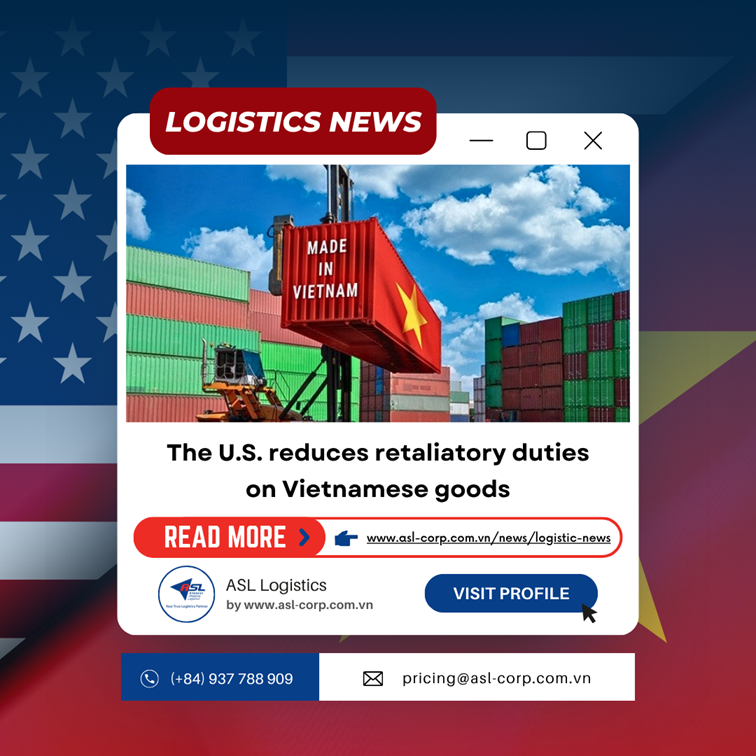
THE UNITED STATES TO SIGNIFICANTLY REDUCE RETALIATORY TARIFFS ON MANY VIETNAMESE EXPORTS
3 July 2025
At 8:00 PM on July 2, 2025 (Vietnam time), General Secretary Tô Lâm held a phone call with U.S. President Donald Trump to discuss Vietnam–U.S. relations and negotiations on retaliatory tariffs between the two countries.
Xem thêm
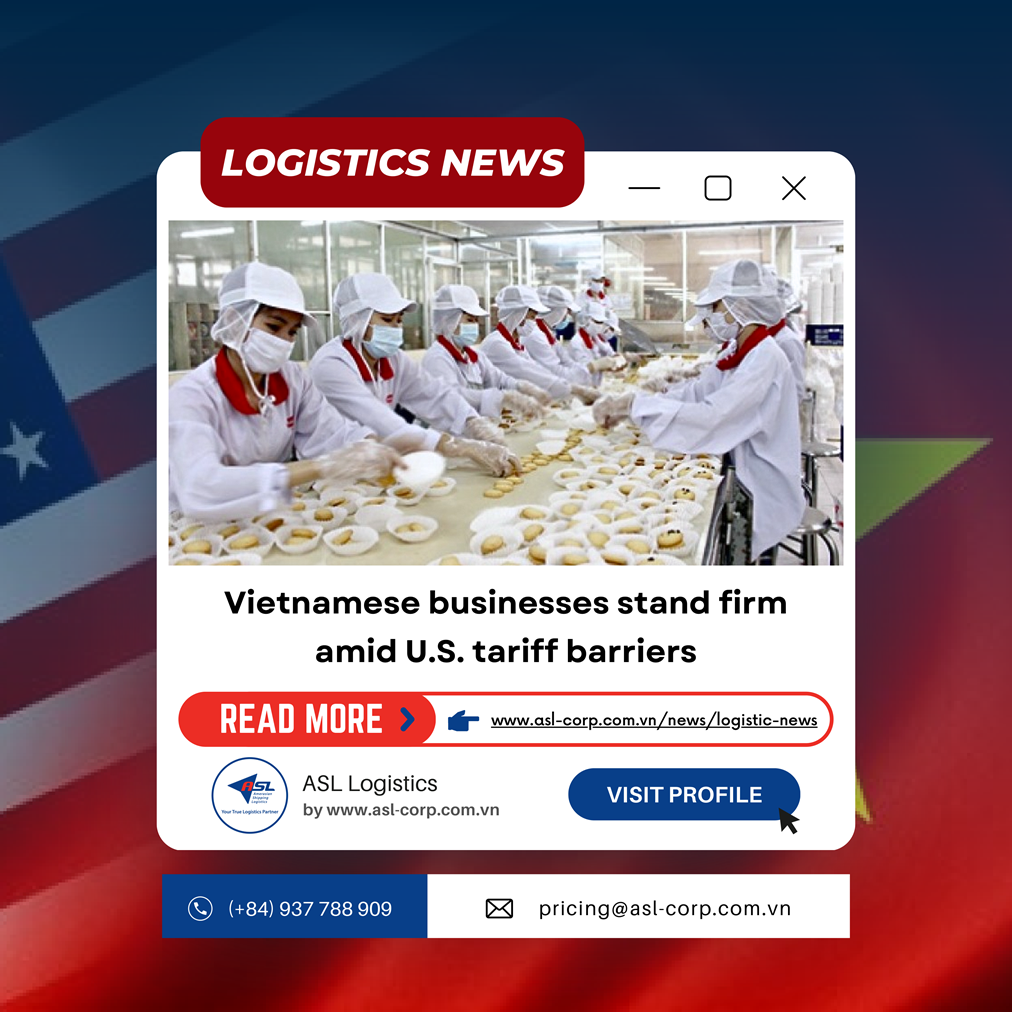
VIETNAMESE BUSINESSES REMAIN A BRIGHT SPOT AMID U.S. TARIFF CHALLENGES
27 June 2025
The year 2025 presents numerous challenges but also great potential for Vietnam's manufacturing and service sectors. Despite ongoing global uncertainties, the resilience and adaptability of Vietnamese businesses remain a bright spot...
Xem thêm
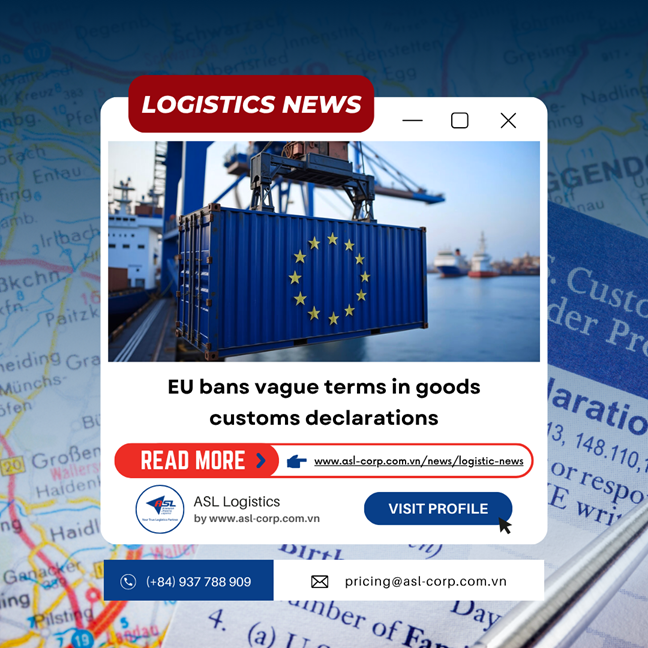
EU BANS VAGUE TERMS IN GOODS CUSTOMS DECLARATIONS
9 August 2025
The European Union (EU) has officially expanded and tightened the list of prohibited words and phrases in the Entry Summary Declaration (ENS), implemented under the Import Control System 2 (ICS2). This new regulation will be mandatory across all modes of transport—including air, road, sea, and rail—starting September 1, 2025.
Xem thêm
.png)
ASIAN SHIPPING “TYCOON” ACQUIRES DUTCH LOGISTICS COMPANY
19 July 2025
On July 17, Japanese shipping giant Nippon Yusen (NYK Line) announced it will acquire Movianto International, a Dutch company specializing in healthcare-related logistics services, for approximately 1.25 billion euros (1.45 billion USD).
Xem thêm.png)
U.S. TARIFF PRESSURE MOUNTS — HOW WILL COUNTRIES RESPOND?
17 July 2025
Southeast Asian economies are making efforts to accelerate trade negotiations with Washington after facing high tariffs imposed by the U.S.
Xem thêm

ESG IN LOGISTICS: A GLOBAL POLICY SHIFT RESHAPING VIETNAM'S BUSINESSES
15 July 2025
As the global economy enters an era of responsible growth, where a company’s value is measured not only by profits but also by its impact on communities and the environment, ESG is no longer just a “trendy buzzword” — it has become an essential standard for any business seeking long-term survival and sustainable development.
Xem thêm
.png)
"GREEN LOGISTICS IS INDISPENSABLE FOR THE SURVIVAL OF VIETNAMESE BUSINESSES"
12 July 2025
Green logistics is not only a long-term goal but also a present opportunity for businesses to thrive amid the global shift toward sustainable development, according to the VCCI Chairman.
Xem thêm

EU MULLS CONCESSIONS TO U.S. TO AVOID ESCALATING TARIFF WAR
09 July 2025
Sources familiar with the matter say the European Union (EU) will not receive a tariff hike notice from the United States. Instead, the bloc is seeking the possibility of being exempted from Washington’s baseline 10% tariff.
Xem thêm
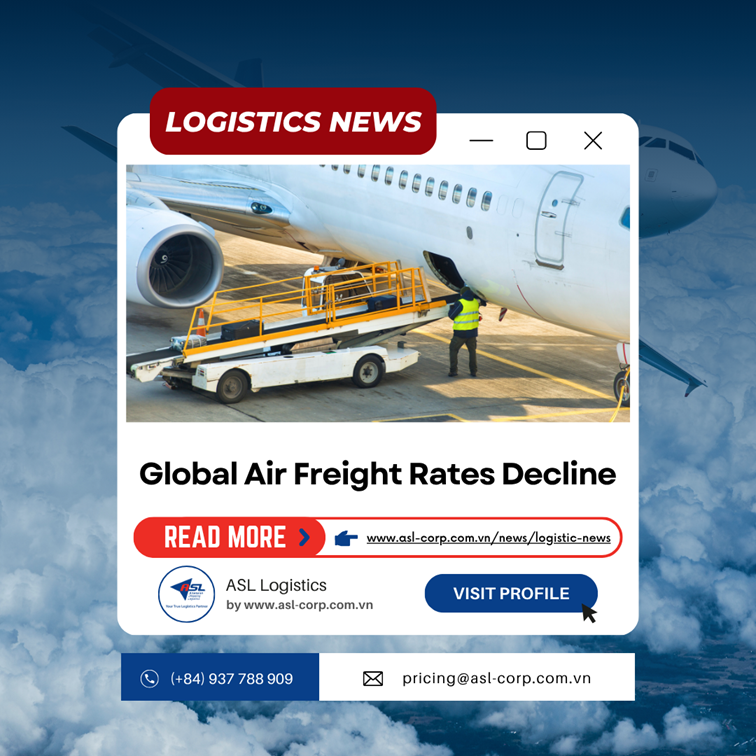
GLOBAL AIR FREIGHT RATES DECLINE
08 July 2025
Amid market uncertainty driven by trade tensions and tariff changes, international air freight rates are trending downward, according to a newly released report from Xeneta.
Xem thêm
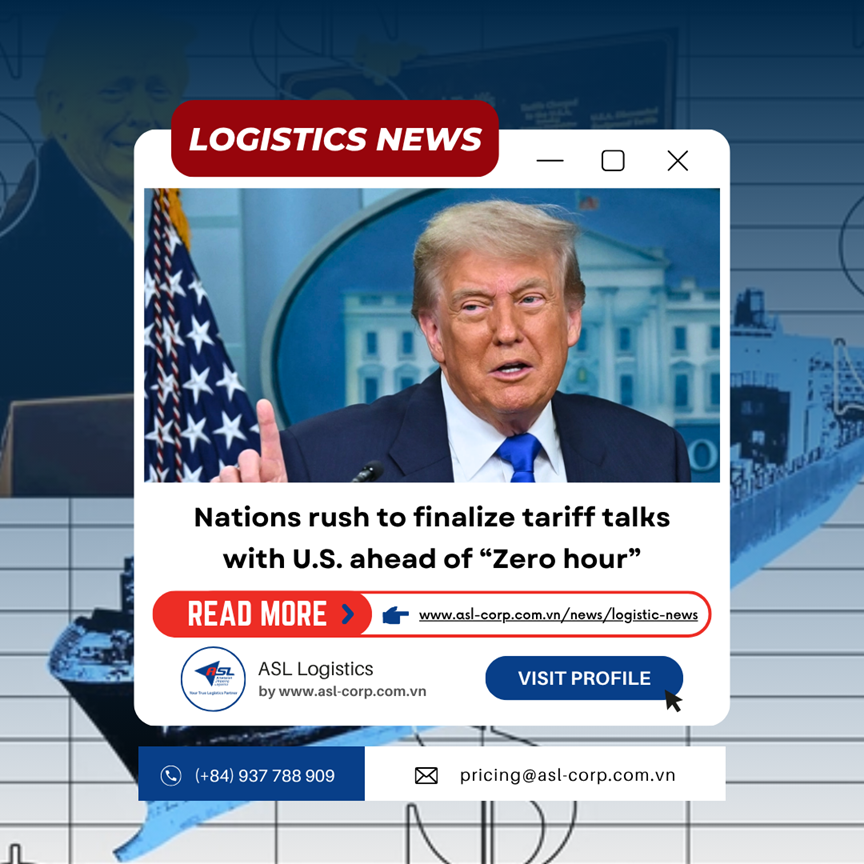
NATIONS RUSH TO FINALIZE TARIFF TALKS WITH U.S. AHEAD OF “ZERO HOUR”
05 July 2025
As the July 9 deadline approaches, trade negotiations between countries, territories, and the Trump administration have entered the final stretch.
Xem thêm

THE UNITED STATES TO SIGNIFICANTLY REDUCE RETALIATORY TARIFFS ON MANY VIETNAMESE EXPORTS
3 July 2025
At 8:00 PM on July 2, 2025 (Vietnam time), General Secretary Tô Lâm held a phone call with U.S. President Donald Trump to discuss Vietnam–U.S. relations and negotiations on retaliatory tariffs between the two countries.
Xem thêm

VIETNAMESE BUSINESSES REMAIN A BRIGHT SPOT AMID U.S. TARIFF CHALLENGES
27 June 2025
The year 2025 presents numerous challenges but also great potential for Vietnam's manufacturing and service sectors. Despite ongoing global uncertainties, the resilience and adaptability of Vietnamese businesses remain a bright spot...
Xem thêm

EU BANS VAGUE TERMS IN GOODS CUSTOMS DECLARATIONS
9 August 2025
The European Union (EU) has officially expanded and tightened the list of prohibited words and phrases in the Entry Summary Declaration (ENS), implemented under the Import Control System 2 (ICS2). This new regulation will be mandatory across all modes of transport—including air, road, sea, and rail—starting September 1, 2025.
Xem thêm
.png)
ASIAN SHIPPING “TYCOON” ACQUIRES DUTCH LOGISTICS COMPANY
19 July 2025
On July 17, Japanese shipping giant Nippon Yusen (NYK Line) announced it will acquire Movianto International, a Dutch company specializing in healthcare-related logistics services, for approximately 1.25 billion euros (1.45 billion USD).
Xem thêm.png)
U.S. TARIFF PRESSURE MOUNTS — HOW WILL COUNTRIES RESPOND?
17 July 2025
Southeast Asian economies are making efforts to accelerate trade negotiations with Washington after facing high tariffs imposed by the U.S.
Xem thêm

ESG IN LOGISTICS: A GLOBAL POLICY SHIFT RESHAPING VIETNAM'S BUSINESSES
15 July 2025
As the global economy enters an era of responsible growth, where a company’s value is measured not only by profits but also by its impact on communities and the environment, ESG is no longer just a “trendy buzzword” — it has become an essential standard for any business seeking long-term survival and sustainable development.
Xem thêm
.png)
"GREEN LOGISTICS IS INDISPENSABLE FOR THE SURVIVAL OF VIETNAMESE BUSINESSES"
12 July 2025
Green logistics is not only a long-term goal but also a present opportunity for businesses to thrive amid the global shift toward sustainable development, according to the VCCI Chairman.
Xem thêm

EU MULLS CONCESSIONS TO U.S. TO AVOID ESCALATING TARIFF WAR
09 July 2025
Sources familiar with the matter say the European Union (EU) will not receive a tariff hike notice from the United States. Instead, the bloc is seeking the possibility of being exempted from Washington’s baseline 10% tariff.
Xem thêm

GLOBAL AIR FREIGHT RATES DECLINE
08 July 2025
Amid market uncertainty driven by trade tensions and tariff changes, international air freight rates are trending downward, according to a newly released report from Xeneta.
Xem thêm

NATIONS RUSH TO FINALIZE TARIFF TALKS WITH U.S. AHEAD OF “ZERO HOUR”
05 July 2025
As the July 9 deadline approaches, trade negotiations between countries, territories, and the Trump administration have entered the final stretch.
Xem thêm

THE UNITED STATES TO SIGNIFICANTLY REDUCE RETALIATORY TARIFFS ON MANY VIETNAMESE EXPORTS
3 July 2025
At 8:00 PM on July 2, 2025 (Vietnam time), General Secretary Tô Lâm held a phone call with U.S. President Donald Trump to discuss Vietnam–U.S. relations and negotiations on retaliatory tariffs between the two countries.
Xem thêm

VIETNAMESE BUSINESSES REMAIN A BRIGHT SPOT AMID U.S. TARIFF CHALLENGES
27 June 2025
The year 2025 presents numerous challenges but also great potential for Vietnam's manufacturing and service sectors. Despite ongoing global uncertainties, the resilience and adaptability of Vietnamese businesses remain a bright spot...
Xem thêm


Head Office
ASL Hồ Chí Minh
Số 31/34A Ung Văn Khiêm, Phường Thạnh Mỹ Tây, TP. Hồ Chí Minh, Việt Nam
 Công Ty Cổ Phần Giao Nhận Vận Tải Mỹ Á
Công Ty Cổ Phần Giao Nhận Vận Tải Mỹ Á
 (+84)28 3512 9759
(+84)28 3512 9759
 (+84)28 3512 9758
(+84)28 3512 9758
 pricing@asl-corp.com.vn
pricing@asl-corp.com.vn
 mdirector@asl-corp.com.vn
mdirector@asl-corp.com.vn
 www.asl-corp.com.vn
www.asl-corp.com.vn
LOGISTICS SERVICES









